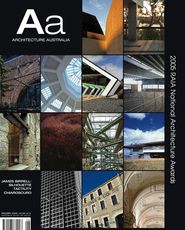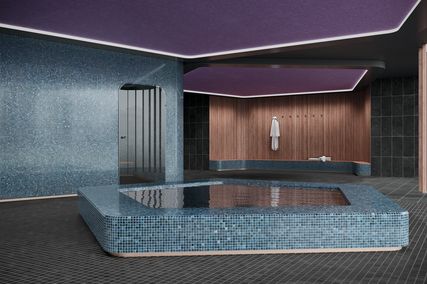This year the National Jury came upon a great variety of excellent projects, varying from the frugal and sensitive to the robust and exquisitely detailed, with all submissions visited of great architectural merit.
The jury’s process began with a two-day session in Canberra early in August, reviewing approximately ninety projects that won Chapter awards and submissions for the 25 Year Award.
During this two-day period, a working method was established. This involved making “first round” decisions, which were then discussed a second time and subsequently reviewed a third time the next day, until consensus was achieved. From the ninety projects considered a short list of thirty-four projects was prepared, and a travel plan organized spanning eleven days to visit these short-listed entries.
During the “road trip”, the threeround decision-making process developed in Canberra was used to evaluate each project. The eventual outcome of this very thorough methodology was full consensus within the jury on all awards.
The task of inspecting, assessing, evaluating and finally awarding, after lengthy and often exciting debate, was never easy and, while the jury is aware that some will be disappointed, the recipients are architects who have contributed in a significant way to architecture in Australia.
The jury was encouraged to find that the strongest projects also showed a clear understanding of ecologically sustainable design principles, incorporated with varying degrees of emphasis.
The jury also found some of the most compelling designs resulted from the incorporation of heritage constraints, or the celebration of the history of place. If the 2005 awards are to send a message to building owners or those considering caring for heritage buildings or places, it is that heritage should not be seen as a burden, but, instead, that in the hands of skilled architects, heritage projects can produce truly remarkable and rich results.
The winning architects also displayed an acute sense of their responsibilities to the public realm and the rights and demands of the individual in sharing this public domain, while acknowledging that some projects were very private indeed. These architects also displayed an understanding of the way buildings are made and the best outcomes were a credit to the builders and their craft.
Certainly the jury feels honoured to have been presented with a comprehensive range of highly skilled works, spanning vast geographical distances. Where possible, the short-listed projects were presented with both the architect and the client present. The lasting impression gained was that the outstanding projects were the result of a highly developed collaboration between the client, the architect and the builder. The outstanding quality of the short-listed works resulted in the jury recommending three joint awards, in heritage, commercial and special national categories; and in the awarding of nine commendations in public, residential, heritage, urban design and interior architecture categories.
Congratulations to all the architects, builders and clients responsible for the projects nominated as finalists in the 2005 RAIA National Architecture Awards, and thank you for the opportunity to assess this year’s submissions.















